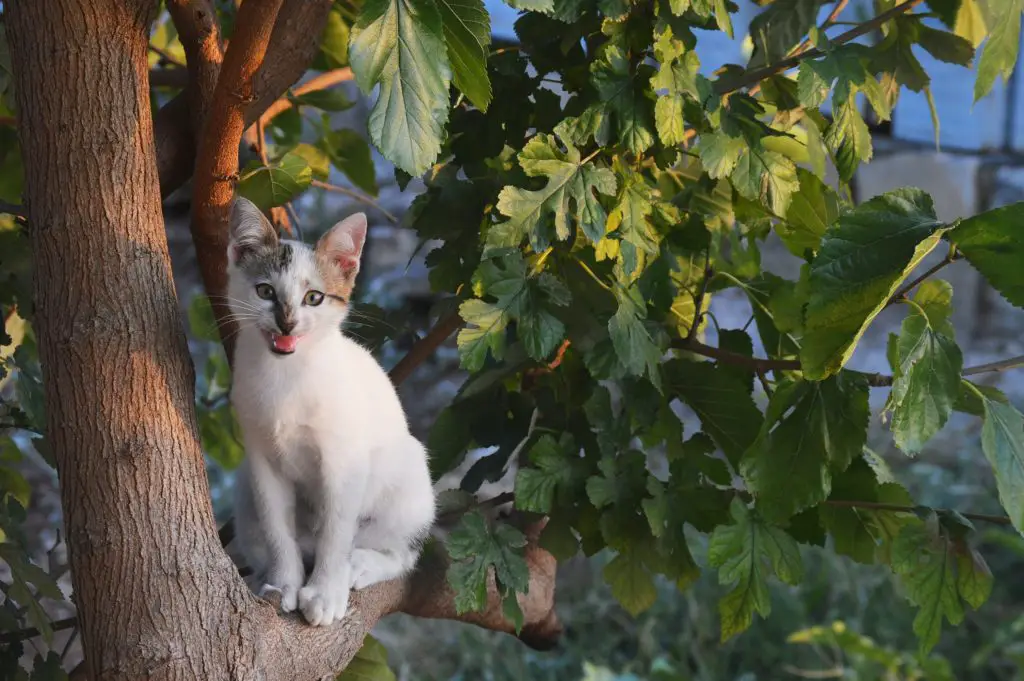Caring for feral cats is a selfless way to serve those in need. Many feral cats rely on homeowners to feed them and provide access to water. If you’re moving, though, you might be worried about the feral cats in your care and what will happen to them when you leave. What do you do with feral cats when you move?
When you move, you can either bring the feral cats with you or leave them behind. If you attempt to move the cats with you, safely trap them and bring them to their new home. If you leave them behind, you can try to convince neighbors or friends to continue caring for the cats.
The rest of this article will further discuss what to do with feral cats when you move, how to safely move feral cats, and how you can help the cats if you leave them behind.
Can You Take A Feral Cat With You When You Move?
Yes, you can take a feral cat with you when you move. If you decide to go down this road, know that it’s an incredibly difficult one that will require patience and effort.
Cats–especially feral ones–are territorial animals. They grow attached to their environments, even ones that seem unpleasant to humans.
If you move your feral cats when you move, it’s important to understand that you’re taking them away from everything they’ve ever known.
If you won’t be able to put in the time and effort to safely move and acclimate your feral cats to their new home, it’s better to leave them behind.
While it seems cruel, they will likely be safe and comfortable.
What To Do With Feral Cats When You Move?
When you move, you can either bring the feral cats with you or leave them in their current home.
These cats are used to weather changes and providing for themselves, which makes leaving them behind much safer than abandoning a tame house cat out in the wild.
Tips For Relocating Feral Cats Safely
Obviously, feral cats aren’t particularly easy to handle: they are wild, after all. Because of this, moving feral cats is much more involved than just grabbing them, placing them in carriers, and releasing them in their new home.
According to Alley Cat Allies, a prominent voice in the handling of feral cats, there are several steps you should take when moving your wild kitties.
- Make sure relocation is the right choice. Though it can be hard to think of leaving your feral cats to fend for themselves, it’s the best option in many situations, especially if the colony is large. Leaving the colony behind when you move will guarantee the cats’ comfort.
- Use covered traps. If you decide to move the feral cat colony, you’ll need to trap each one of the cats. You can put wet cat food, chicken, or other snacks in the traps to lure the cats inside. Covering the traps when transporting the cats helps to keep them as calm as possible.
- If possible, spay and neuter the cats before moving them. If you don’t, the size of the colony will continue to grow exponentially. Responsibly caring for feral cats means trying to prevent overpopulation as much as possible.
- Keep the cats in confinement after moving them. Since feral cats are territorial, they will try to find their way back to their old home. To help prevent this–and keep the cats from being injured or getting lost–keep them in confined spaces outdoors for a while after moving. Once they acclimate to their new home, they’ll be less likely to leave.
- Make sure their confinement is as comfortable as possible. Give the cats constant access to fresh water, feed them their favorite canned foods, and provide them with a regularly-cleaned litter box. By making the cats as comfortable as possible in their new home, they’ll be more likely to stick around when you set them free.
- Give the cats space. Even though they’ll be in a confined space, now isn’t the time to pressure your cats into becoming friendly. Feral cats are notoriously hard to tame. Respect the cats by letting them have their space, and they’ll feel more comfortable staying in their new home.
What Can You Do For A Feral Cat If You Can’t Take It With You?
It can feel like torture to leave your feral cat colony behind when you move. If you’ve invested a lot of time and money into caring for the cats, it can feel like abandoning family members. However, sometimes it’s the best–or even only–choice.
If you have to leave them behind, don’t fret; feral cats are very resilient and strong. They will likely survive, and even thrive, without you there.
However, if you’re worried about leaving them to fend for themselves, there are steps you can take to help the cats once you’re gone.
The easiest way to help a feral cat after you move is to find someone new to provide for them. You may be able to find a kindhearted friend or family member who will agree to check in on and care for the cats.
Be sure to give them as much information as possible about the colony–how many cats there are, any known health issues, their habits, etc.
If you can’t find a friend to care for the cats when you leave, there are nonprofit organizations that may be able to help, such as Carol’s Ferals. These organizations help to care for–and occasionally even re-home–feral cats.
Check your community for local feral cat care groups to see if they can help.
Final Thoughts
It can be difficult to know the best thing to do for a feral cat colony when you move. It’s important to consider all of theoptions before making a decision.
While it’s often possible to safely move and acclimate feral cats to a new home, leaving them in the place they’ve always known is sometimes the most helpful thing you can do.

My name is Katie, and I have had different pets at home for as long as I can remember. While I can definitely say I love all animals in general, my heart belongs to cats and dogs. I know you are supposed to choose one or the other, but I could never really decide. I’ve also owned hamsters and fish when I was a kid, and they filled my childhood with very delightful memories.





